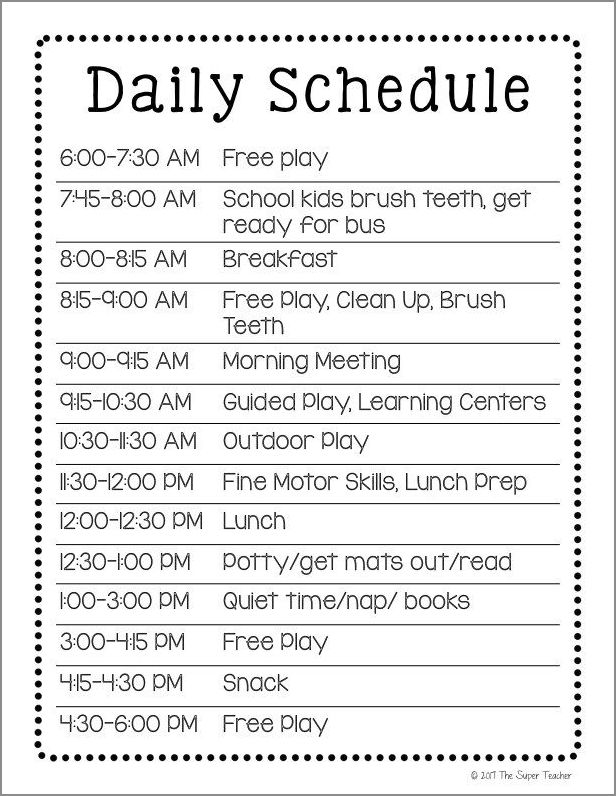As a daycare provider, creating a daily schedule is essential to ensure a smooth and structured day for both the children and the caregivers. A well-planned schedule provides stability, and routine, and helps children feel secure in their environment.
In this article, we will explore the importance of a daycare daily schedule and provide you with valuable tips and examples to help you create an effective and engaging schedule for your daycare center.
Why is a Daycare Daily Schedule Important?
A daycare’s daily schedule plays a crucial role in the development and well-being of children. It provides a predictable routine that helps children feel secure and reduces anxiety. A structured schedule also promotes learning, and social interaction, and helps children develop important life skills. Additionally, a well-planned schedule allows caregivers to efficiently manage their time and resources, ensuring that all children’s needs are met throughout the day.
Creating a daycare daily schedule requires careful consideration of various factors, such as the age of the children, their developmental needs, and the goals and objectives of the daycare center. Let’s dive deeper into the different components of a daycare daily schedule and how you can create an engaging and effective one.
The Components of a Daycare Daily Schedule
A daycare daily schedule consists of various components that work together to create a balanced and engaging day for the children. These components include:
1. Arrival and Greeting Time
Designate a specific time for children to arrive at the daycare center. During this time, caregivers should welcome each child individually, engage in conversation, and help them transition from home to the daycare environment. This time is also an opportunity to establish a positive and nurturing atmosphere.
2. Circle Time
Circle time is a group activity where children come together to participate in songs, stories, and discussions. It promotes social interaction, listening skills, and language development. Circle time can include activities like singing a welcome song, reading a story, and discussing the day’s theme or topic.
3. Learning and Play Centers
Create designated areas or centers for different types of play and learning activities. These centers can include a block area, art area, sensory play area, dramatic play area, and more. Rotating the activities in these centers throughout the day allows children to explore different materials and engage in various types of play, promoting creativity, problem-solving, and fine motor skills.
4. Outdoor Time
Outdoor time is crucial for children’s physical development and well-being. Plan regular outdoor activities, such as playground time, nature walks, or organized games. Outdoor time allows children to engage in physical exercise, experience nature, and develop gross motor skills.
5. Meal and Snack Time
Include designated times for meals and snacks in your daycare daily schedule. Providing nutritious meals and snacks is essential for children’s growth and development. Make sure to follow any dietary restrictions or allergies and create a calm and enjoyable atmosphere during mealtime.
6. Rest and Nap Time
Depending on the age of the children, incorporate a designated rest or nap time into the schedule. Provide comfortable resting areas and ensure a quiet and calm environment. Rest time allows children to recharge and promotes their overall well-being.
7. Enrichment Activities
Include special enrichment activities in your daycare daily schedule, such as music and movement, yoga, science experiments, or art projects. These activities add variety and excitement to the day, promoting creativity, curiosity, and a love for learning.
8. Departure Time
Allocate a specific time for parents or guardians to pick up their children. Use this time to provide feedback on the child’s day, share any important information, and engage in brief conversations with parents or guardians.
Tips for Creating an Effective Daycare Daily Schedule
Creating a daycare daily schedule that is engaging, balanced, and effective requires careful planning and consideration. Here are some valuable tips to help you create a schedule that meets the needs of both the children and the caregivers:
- Consider the age and developmental needs of the children: Different age groups have different needs and abilities. Tailor your schedule to meet the specific requirements of the age group you are caring for.
- Keep transitions smooth: Minimize disruptions and create smooth transitions between activities. Use visual cues, such as a visual schedule or a transition song, to help children understand and anticipate the next activity.
- Allow for flexibility: While a structured schedule is important, it is also essential to allow for flexibility and spontaneity. Leave room for child-led activities and incorporate free play time.
- Communicate with parents: Share the daily schedule with parents or guardians so they are aware of the activities and routines their child will be engaged in. This helps create consistency between home and daycare.
- Observe and adjust: Regularly observe how the children are responding to the schedule and make adjustments if necessary. Every child is unique, and their needs may change over time.
- Involve children in the planning process: Depending on their age, involve children in creating the schedule by allowing them to make choices or contribute ideas. This promotes a sense of ownership and engagement.
Sample Daycare Daily Schedule
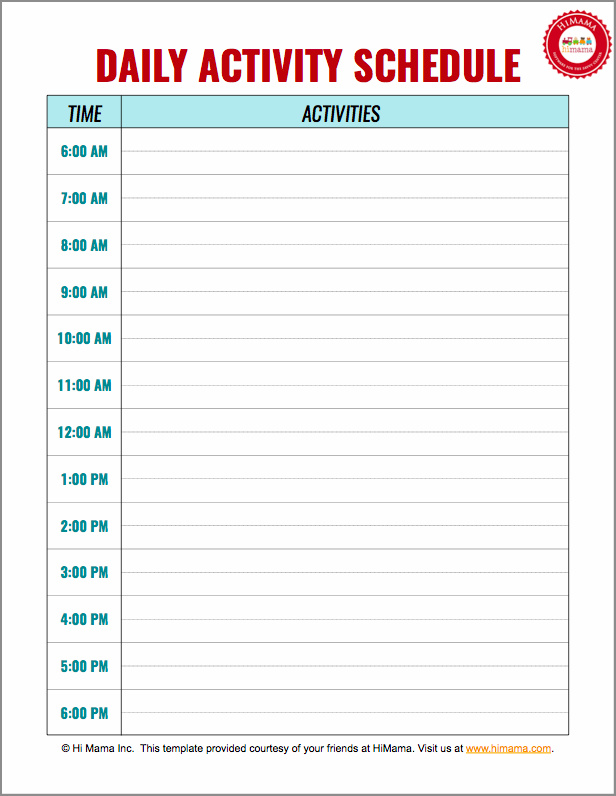
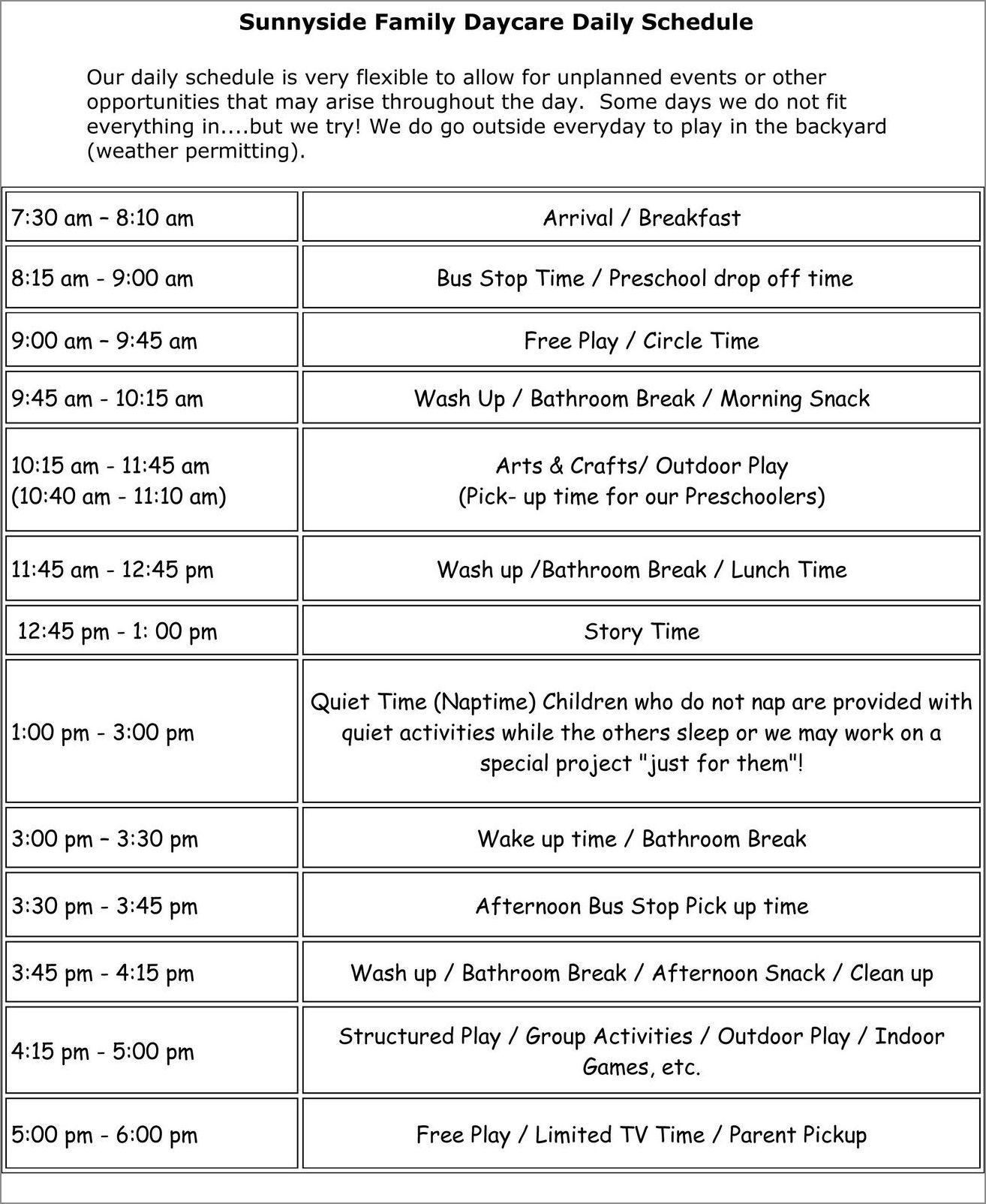
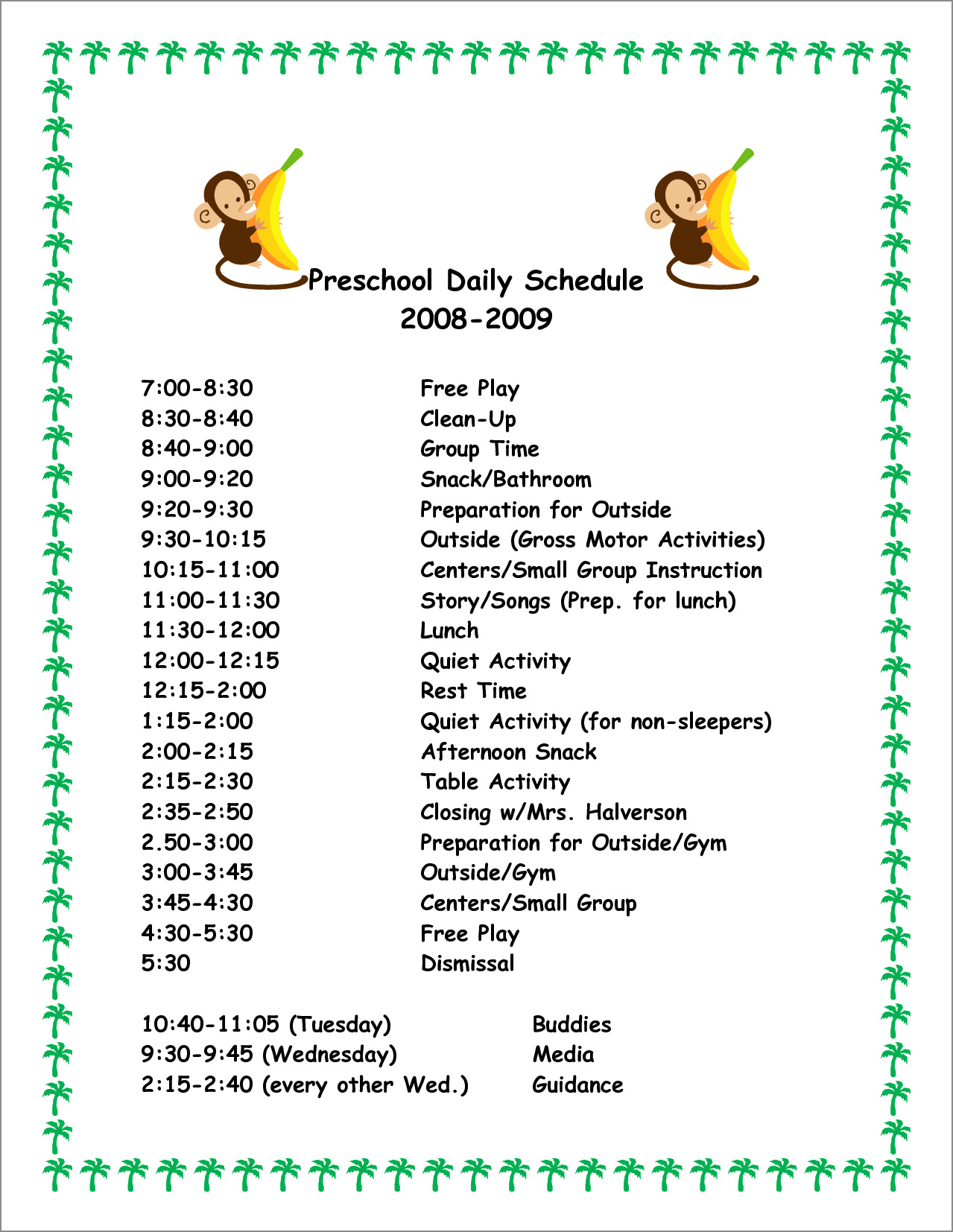
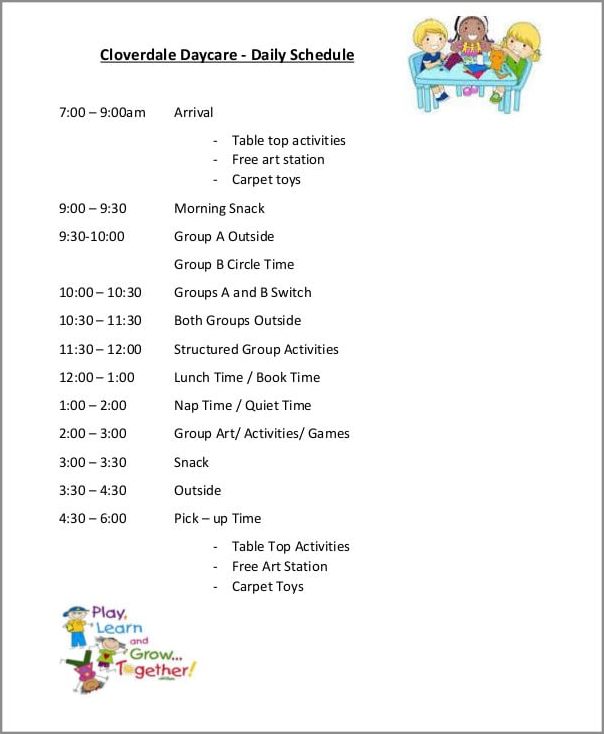
Here is a sample daycare daily schedule to provide you with an example of what a well-planned and balanced schedule may look like:
- 8:00 AM – 9:00 AM: Arrival and Greeting Time
- 9:00 AM – 9:30 AM: Circle Time
- 9:30 AM – 10:30 AM: Learning and Play Centers
- 10:30 AM – 11:00 AM: Outdoor Time
- 11:00 AM – 11:30 AM: Meal and Snack Time
- 11:30 AM – 12:00 PM: Enrichment Activity (e.g., Music and Movement)
- 12:00 PM – 2:00 PM: Rest and Nap Time
- 2:00 PM – 3:00 PM: Learning and Play Centers
- 3:00 PM – 3:30 PM: Outdoor Time
- 3:30 PM – 4:00 PM: Snack Time
- 4:00 PM – 4:30 PM: Enrichment Activity (e.g., Art Project)
- 4:30 PM – 5:00 PM: Free Play
- 5:00 PM – 6:00 PM: Departure Time
Conclusion
Creating a daycare daily schedule is a vital aspect of running a successful daycare center. It provides structure, routine, and promotes the overall development and well-being of the children in your care. By following the tips and examples provided in this guide, you can create an engaging and effective schedule that meets the needs of both the children and the caregivers. Remember to regularly evaluate and adjust your schedule based on the unique needs and interests of the children under your care. With a well-planned daily schedule, you can create a nurturing and enriching environment for the children in your daycare center.
Daycare Daily Schedule Template – Download
